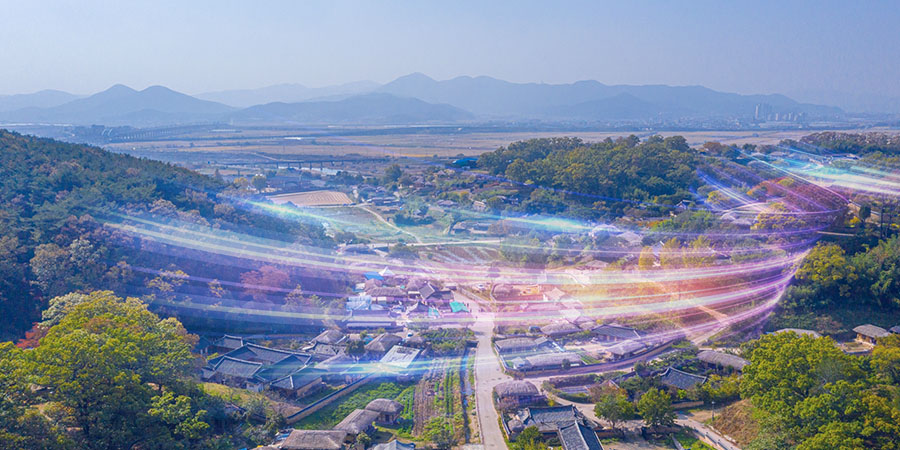Driven by its significant return to growth, North America will lead the Radio Access Network (RAN) market by 2028, according to the latest global RAN market report by analyst firm, Dell’Oro Group.
The outlook remains challenging, however, the sector is demonstrating positive signs geared towards recuperation.
The downturn in the RAN market impacted the telecommunications industry substantially, affecting revenues, strategies, and operational efficiencies. However, the anticipation of stabilization is expected to deliver relief to major technology players.
While optimism appears to be clouded due to the recession affecting the telecom industry, technological advancements will play significant roles in supporting the industry’s efforts to regain stability and growth.
Related: Open RAN – Connectivity Solutions for Mobile Architectures
The Telecom Sector’s Rise Against the Odds in the RAN Market
When technology advances, challenges also emerge. Despite the advent of cutting-edge innovations that transform the industry, various constraints are inevitable.
The recent report from Dell’Oro Group underscored the substantial downturn of up to 30% of the RAN market in the first quarter of the year—the third consecutive quarter where double-digit contractions have prevailed, marking a steep drop in the market’s history.
Stefan Pongratz, Vice President and analyst at Dell’Oro Group, expressed his optimism, stating, “Even if the RAN market is still down at a double-digit rate in the first half, the second quarter offered some glimmer of hope that the nadir of this cycle with double-digit declines might now be in the past for the time being.”
“This does not change the fact that the RAN market is expected to decline at a 2% CAGR over the next five years. But the pace of the decline should moderate somewhat going forward,” he added.
With North America leading the revenues in the Open RAN market, Europe is expected to follow with a downturn of 15% to 20% by 2028. China’s trends exhibit stability, but this does not mitigate the declines seen in the Asia Pacific region, particularly the downturn in India.
Deemed previously as one of the fastest-growing countries in the RAN market, India’s pullback and substantial drop in revenue is concerning, highlighting the vulnerabilities in the telecom sector.
Vendor rankings have remained relatively unchanged with technology giants such as Huawei, Ericsson, Nokia, ZTE, and Samsung leading the RAN market. Notably, they have a combined total market share of 95.1% in 2023, according to the latest RAN vendors report from Omdia.
Moreover, the top three vendors—Huawei, Ericsson, and Nokia—recorded 75.1% of the market revenue, highlighting their ambition to be leaders in the field.
Recognized as the leader in portfolio performance and second in business performance, Swedish telecommunications company, Ericsson, underscored the company’s strategic offerings and competitive edge in the market. Chinese conglomerate, Huawei, ranked first in business performance while taking the second lead in the portfolio category, indicating the company’s operational prowess. On the other hand, Finnish telecommunications equipment provider, Nokia, ranked third in both dimensions.
However, Ericsson and Nokia will have to adapt to the shifting digital landscape to compete with Chinese vendors and capitalize on the potential recovery in the second half of 2024. The two companies’ solid presence in the market presents their capability to establish massive-scale Open RAN deployments in the coming years.
Also Read: Open RAN to Create an Evolution in the Telecom Industry
Potential for Recovery
The telecommunications industry has seen numerous turbulent times and operators are optimistic that this recession shall pass, highlighting its resiliency amid challenges.
Individuals and enterprises have increasingly grown dependent on technology and telecommunications, providing hope for the sector to bounce back from the economic downturn. The hope for gradual recovery will force operators to adapt to new market dynamics, leveraging technology advancements to meet consumer demands.
The increasing adoption of Open RAN and cloud-based infrastructures will provide opportunities for the telecom industry to recover from the downturn, enabling cost reduction and enhancing interoperability and network flexibility.
According to global technology intelligence firm, ABI Research, the Open RAN market will continue to project an upward, yet slow, growth to reach 6% to 8% by the end of 2024.
Driven by the need for enhanced efficiency and the integration of new applications, the widespread expansion and adoption of 5G technology will drive stability in the global RAN market. Major investments in 5G infrastructures will deliver the transformative abilities of the latest network generation to support the technological needs of RAN developments.
Dell’Oro’s forecast also highlighted the favorable impact of Open RAN outside of China, projecting that it could account for 30% to 40% of revenues by 2028.
Estimates for Open RAN, Cloud RAN, and Multi-vendor RAN remain relatively unchanged, with projections suggesting they will account for over 25%, 20% to 25%, and less than 10% of the total RAN market, respectively.
Furthermore, telecom operators should enhance revenue generation and focus on cost optimization to recover from the recession. Accelerating the 5G rollout will provide revenue-generating services and products.
Fostering partnerships and collaborations in the telecom sector will also aid in developing and deploying new RAN technologies.
Read More: Middle East Operators Embrace Open RAN to Drive Innovation, Cut Costs
Advances in RAN Technology
As the RAN market stabilizes, operators are determined to look for innovative solutions to enhance operational efficiency and reduce costs. Telecom operators have embraced Open RAN architectures, promoting interoperability and vendor diversity.
Recently, telecommunications company, Vodafone, and technological research center, i2CAT Foundation, announced their collaboration to develop an automated Open RAN management system, thus, delivering enhanced security and greater innovation.
This system will deliver a unified multi-vendor dashboard, enabling Vodafone to respond to, and control, Open RAN events over a wide geographical area. These initiatives are part of Vodafone’s goal to have 30% of its masts based on Open RAN technology in Europe by 2030, including the 2,500 Open RAN sites in the United Kingdom.
In 2023, technology company, Dell Technologies, along with Ericsson, collaborated to establish Cloud RAN solutions, extending the digital ecosystem by providing flexibility. In addition, Vodafone and Nokia completed an end-to-end Open RAN trial across a live 5G standalone (5G SA) test network in Italy, achieving performance results comparable with 5G RAN.
The trial operated Nokia’s AirScale Massive MIMO radios and baseband software on Dell Technology’s PowerEdge XR8000 servers and Red Hat’s OpenShift. Nokia’s intelligent MantaRay networks management system was also utilized, improving monitoring and management.
Underscoring its position in the RAN market, Ericsson launched its RAN compute silicon, supporting the demands of 5G-Advanced and artificial intelligence (AI) algorithms.
Utilizing Intel 4 technology, Ericsson and Intel established a strategic partnership to develop a new generation of RAN compute products. Ericsson’s high-capacity RAN Processors 6672 and 6372, offer four times the capacity compared to previous network generations, supporting up to six 4G and 5G models in a single unit.
In the Middle East, telecommunications operators, e& and Ericsson, accomplished a Cloud RAN trial earlier this year. The trial fell in line with the Cloud RAN Memorandum of Understanding (MoU) signed by the two companies in Dubai last year.
Dell Technologies and Saudi Arabian telecommunications tower company, TAWAL, also established an agreement this year to develop and implement Open RAN technology, advancing the Kingdom’s telecommunications landscape through flexibility and scalability.
Telecom Review Exclusive Interview: Transforming UAE Telecoms Through Cloud Security and Open Standards
Final Thoughts
Despite recent technological advancements in various industries, no sector is insusceptible to downturns.
As the telecom industry navigates the challenges, hope remains for the potential recovery and stability of the RAN market. The rise of the telecom sector amidst the recession will highlight a major transformation where innovative solutions and rewards can be delivered.
Strategic investments and support in the acceleration of 5G deployment and advancements will drive the industry to emerge stronger, enabling the development of innovations, such as Open RAN, to amplify flexibility and reduce operational costs.
Ensuring the industry’s recovery against economic downturns, despite the increasing pressure to improve operational efficiencies, should be paramount to propel the sector to greater horizons.
Read More: 5G Standalone: New Ways to Operate and Automate Networks







